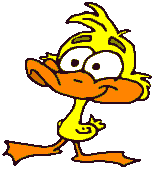
Miss. Sykes' Website
The Ugly Duck says Uhhh!

Rationale: This lesson teaches the short vowel correspondence u=/u/. In order for children to be able to read, they must recognize spellings that map word pronunciations. The goal of this
lesson is that children will be able to identify, spell, and read words containing the short vowel u. Students will be introduced to a visual representation of a lazy caveman scratching his head and saying “uhh”. Through the knowledge gained in this activity, students will learn to recognize, spell, and read words that contain the correspondence u = /u/.
Materials:
-
Image of caveman scratching head, while looking confused and saying “uhhh”
-
Coverup critter
-
Sentence strip with the tongue tickler “ugly duckling was upset because he was unusual” printed on it.
-
Elkonin Letterboxes per student
-
Letter manipulatives for children (a, b, c, d, h, k, l, m, n, p, r, s, t, u)
-
List of words with pictures on poster for students to read (up, at, duck, club, slum, punk, scrub, struck, scrunch).
-
Decodable Text: Bud the Sub by Sheila Cushman
Procedures:
-
Say: Today we are going to work with the letter u in written text (write the letter u on board). When I say the letter u, how does my mouth move? Everyone say “uhh” with me and lets really focus on where our tongue sits in our mouth when we say it. Our tongue sits in the bottom of our mouth, while our mouth is slightly opened. When I think about the short u sound, I think about a lazy caveman drooling and saying “uhhh” like he is very confused. Everybody act like a lazy caveman with me and we will all say “uhh” together.
-
Say: Now I will show you a tricky tongue tickler to help you remember the sound that short u makes. Repeat the tongue tickler after me… “ugly duckling was upset because he was unusual” (wait for students to repeat tongue tickler). Great job, now we can recognize the short u sound when we hear it. Now let's kick it up a notch, I want you to scratch your head like a lazy caveman when you hear the short u sound in the tongue tickler “u-gly d-u-ckling was u-pset because he was u-nusual”.
-
Say: Lets work on spelling some words out loud and review how to do our letterbox lesson. I want you to spell the word “luck”. Like, “The man did not have any luck finding his dog.” To spell this word in our letterboxes, I need to know how many boxes I should have. Remember, each box gets one phoneme, which is one sound. Even when two letters make one sound, they go into just one box. I will stretch out the word and count: /l/ /u/ /ck/. I need 3 boxes for this word. We know that when you hear the “kuhh” sound after a short vowel, it is a “ck”.
-
Now I will draw an Elkonin letterbox on the white board to use as a visual aid for myself, while my students use their letterboxes at their desk. Each child will have their own set of letters to create the words. Say: Now we can practice spelling some words. I want you to make sure that your letters are facing upward where you can see the lowercase letters. Lets start off by spelling the easy words. The first word is “up”. Read the word "up". *Waits for student to read the word.* Like, “The girl looked up to see the beautiful blue sky.” Our mouth moves two times, so we know that we only need two boxes to fit this word in. Another word that requires two boxes is “at”. Now read the word "at". *Waits for students to read the word "at".* “He looked at his friend while he threw the ball.” Now lets make three boxes, because our next few words have three phonemes. I want you to spell “duck”. Now read the word "duck". *Waits for student to read the word "duck".* “I watched the duck float across the pond.” Next spell “punk”. Now read the word "punk".*Waits for students to read the word "punk".* Now we can spell “scrub”. It has five phonemes.
-
Say: That was easy, huh? Now we can read the book Bud the Sub. Before my students read this new book, I will provide a book talk to reel them in and get them interested in the book that they are about to read. The book talk will go as followed: Bud is a tiny sub who travels through the sea with his boss, Gus. Gus sets Bud up to sail away. He dips and dives into the ocean.. But what will happen next? Why don’t you read the book and let me know how it ends. Students will then read the book in pairs at their table and we will talk about it afterwards.
-
Assessment: Students will be provided a picture page where they should circle the pictures with the /u/ sound. While students work on the picture page, I will call students up one at a time to assess their reading of Bud the Sub and their understanding of the correspondence u = /u/. I will be using a running record.
References
Cranston, Molly. “Ugly Uhh’s” https://mcranz15.wixsite.com/mysite/br-lesson
Cushman, Sheila. Bud the Sub. Educational Insights: Carson, CA, 1990.